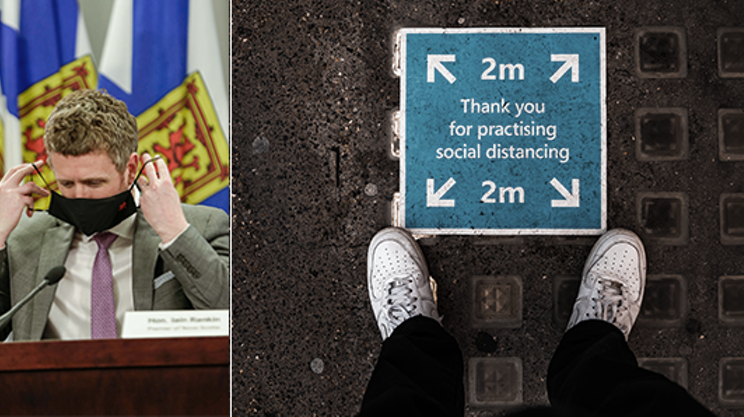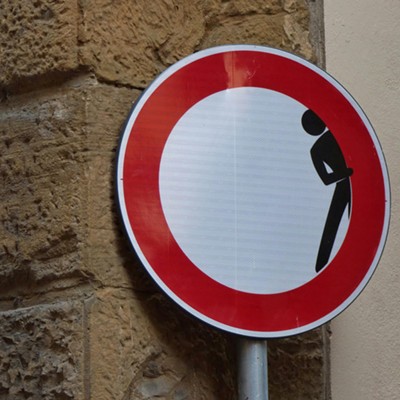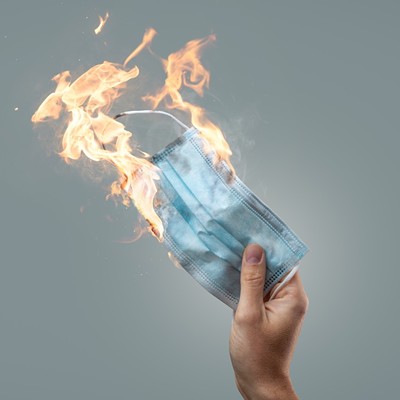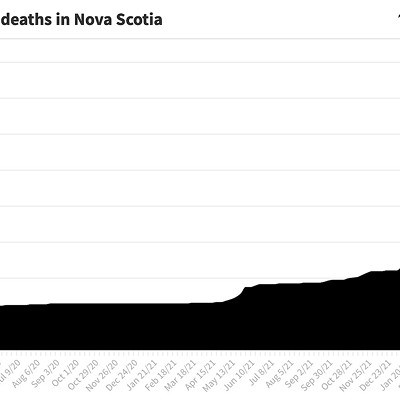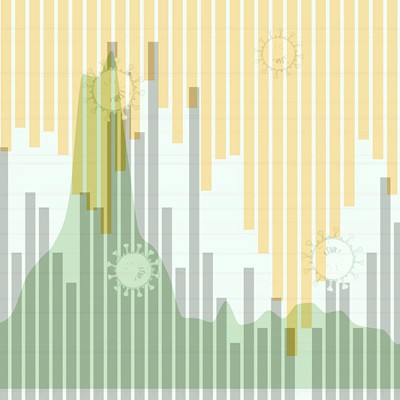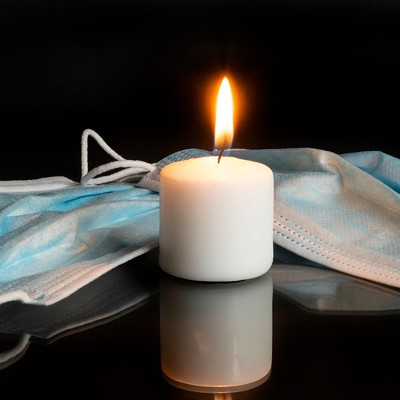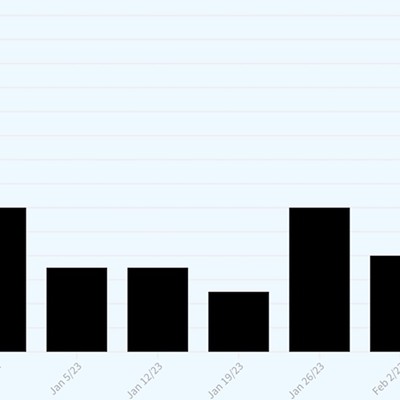NOTE: This day is now over. Click for the latest on COVID-19 from The Coast. Or for an informative look back at Nova Scotia's evolving pandemic response, keep on reading.
Map of NS community health networks Table of community networks New and active cases Recoveries Daily average infections
15 new cases—another increase
Thursday, June 10, 2021
Reopening status
Phase 1
New cases
15
New recoveries
31
New deaths
0
Active cases
147
Days in a row with cases
73
Total cases in Nova Scotia during pandemic
5,721
Total COVID deaths
88
Recoveries jumped from 20 yesterday to 31 in today's COVID report from the province, the sort of increase we were rooting for. (That pushed the active caseload down to 147 active cases, an example, like the hospitalization count falling from 15 patients Wednesday to 10 Thursday, of a good decreasing number. But we're more focused on the increases right now.)
Testing is up a bit—there were 4,761 tests processed yesterday in provincial labs—and vaccinations are up a ton. Yesterday clinics around the province jabbed 16,236 people, more than double the current daily average.
Some rising numbers aren't rising enough; premier Iain Rankin would probably like that testing count higher. “As more and more Nova Scotians get vaccinated, I want to remind people of the continued importance of getting tested for COVID-19,” he says in the province's report.
“Testing is a key part of our reopening plan. If people continue to get tested, the health system can identify new cases of COVID-19 early on and limit the spread of the virus.”
Where the infections are
Today's 15 new cases are in Central zone (12 cases) and Eastern (three). Two in Central are under investigation for possibly being related to community spread; the rest in the province are travel-related or close contacts of other C19 patients. For the breakdown by the local community health networks, count on our map and table below. The case diagnosed today at Citadel High School (see below) is not one of the 15 new cases; it will be added to the official count in tomorrow's report.
Public health’s letter to close contacts at Citadel
Here's the notice to people who are an "Identified Close Contact" of someone who was recently diagnosed at Citadel high (see below for information about Citadel's cases). "Public Health has determined that you (staff) or your child (student) may have been exposed to COVID-19 on June 4, 7, 8 and/or 9th at Citadel High School and are considered a close contact," it begins. "This could be because you/your child shares the same class and/or after-school program/activities with the person who tested positive."
The second paragraph starts strong with clear, unambiguous instructions about what this means: "All students and staff who receive this letter must self-isolate immediately." The isolation lasts "for 14 days, regardless of a negative test result." If you are a close contact, you have to go into quarantine, simple as that.
Two weeks in isolation is a major reaction, but it's justifiable. We are fighting a war against this virus, after all, and sacrifices have to be made. Except…in the third paragraph those sacrifices seem to become meaningless.
"Household members of close contacts do not need to self-isolate," it states, "unless the identified close contact has or develops any symptoms, then your entire household must isolate pending the close contact’s test results."
First, waiting for symptoms to develop before taking action is particularly misguided when it's believed at least a third of people who have COVID don't get any symptoms.
Second, what constitutes "close contact" more than members of a household? Public health's letter suggests that anyone in a class with an infected person could be considered a close contact. So if a student in the back corner of the classroom tests positive for COVID, the other students and the teacher scattered around the rest of the room, most more than two metres away, are exposed enough to require two weeks of quarantine. That's after a couple hours spent in a room breathing the same air while wearing masks the whole time, as everyone in schools does.
Then that teacher goes home to spend 24 hours a day breathing the same air as everyone else in the household, probably maskless, probably sharing some, if not all, living space and meals. For two weeks. And those other people in the house—the closest contacts of someone who's deemed an exposure risk through "close contact"—are free to come and go as they please, interacting with people at work, in stores, on patios.
It makes no sense. If someone's considered an active COVID threat who absolutely must stay in isolation for 14 days even if they test negative, then the people they live with are threats, too. But unless they all quarantine, it's the same as none quarantining.
Another case at Citadel High School
People in the Citadel high community received notice this afternoon of the school's second case in two days. "Public Health has confirmed an additional case of COVID-19 connected to Citadel High," reads the notice from Nova Scotia Health. "Based on our findings to date, the potential exposure to COVID-19 could have happened on June 4, 7, 8 and/or 9th."
As with yesterday's case, only people believed to be close contacts of the infected person will be contacted to talk about further testing and isolation, but "out of an abundance of caution, Public Health is recommending that all students and staff be tested for COVID-19, whether or not you have symptoms, as we are encouraging all Nova Scotians to get tested regularly." (Bold in the NSHealth letter.)
We are looking for someone who's been contacted as a close contact. We'll let you know what that contacting is like if we connect.
COVID at Fairview Junior High
Around 10 o'clock last night, the province issued a press release about a case diagnosed at Fairview Junior High School. Is the new patient a student? A teacher? The principal? The province doesn't elaborate, only saying the person is "connected to" the school.
FJHS is now closed until Monday. "The school will inform families about at-home learning," says the provincial announcement, advising that close contacts of the infected person will hear from public health to talk about testing and a two-week quarantine. "Out of an abundance of caution, public health is recommending that all students and staff be tested for COVID-19, whether or not they have symptoms. No self-isolation is required while they wait for test results, unless they have been identified as a close contact by public health or have symptoms."
This is the second school-related case diagnosed Wednesday. Citadel High School's case came earlier in the day and made it onto yesterday's Coast report. In the last week there have been five school cases, all of them listed at the Halifax Regional Centre for Education COVID page.
Map of cases in community health networks
This infographic was created by The Coast using daily case data from Nova Scotia's official COVID-19 dashboard. Our goal is for this to be the best NS COVID map around, clearer and more informative than the province or any other media organization provides. To get there we do an analysis of the data to find each day's new and resolved case numbers in the 14 community health networks, information the province does not provide. For a different but still highly accessible approach to the latest COVID statistics, check out our case table.
jump back to the top
Case table of the health networks
The Coast uses data logged from Nova Scotia's official COVID-19 dashboard in order to provide this tabulated breakdown. The province reports the number of active cases in each of Nova Scotia's 14 community health networks, but we do the math to be able to report the new and resolved case numbers. We also map the data to provide a different view of the case information.
jump back to the top
New and active cases visualized
This interactive graph charts COVID activity in Nova Scotia's third wave, comparing daily new cases with that day’s active caseload. The dark line tracks the rise and fall of new infections reported by the province, which hit a Nova Scotian pandemic record high of 227 cases in a single day on May 7. The green area is the province's caseload, which peaked May 10 at 1,655 active cases. Click or however over any point on the graph and the detail for that moment will pop up. To focus on just new or active cases, you can click the legend at the top left of the graph to hide or reveal that data set.
jump back to the top
Recoveries and infections graphed
A person who tests positive for COVID-19 counts as a new case, the beginning of a problem for both the province and that person. The best ending to the problem is the patient recovers from the disease. This interactive chart compares how many problems started (the red area of new cases) to how many ended (the blue area's recoveries) each day in Nova Scotia's third wave, revealing growth trends along the way. Click or hover over any point on the graph and the detail for that day will pop up, to reveal exactly how quickly things change: May 7 had Nova Scotia's most-ever infections diagnosed in one day, 227 new cases, more than triple the 71 recoveries that day. Two weeks later, May 21, had a record recoveries, 197 in a day, more than double the 84 new cases. To focus on just new cases or recoveries, you can click the legend at the top left of the graph to hide or reveal that data set.
jump back to the top
Average and daily new cases
Knowing the average number of new cases Nova Scotia has every day—the orange area in this graph—is useful to show the trend of infections without one day's ups or downs distorting the picture. Having the daily new cases as well, the dark line on the graph, gives a sense of how each day compares to the average. We use the rolling (AKA moving or running) 7-day average of daily data reported by the province; here's a good explainer of what a rolling average is.
jump back to the top
Click here for yesterday's COVID-19 news roundup, for June 9, 2021.

